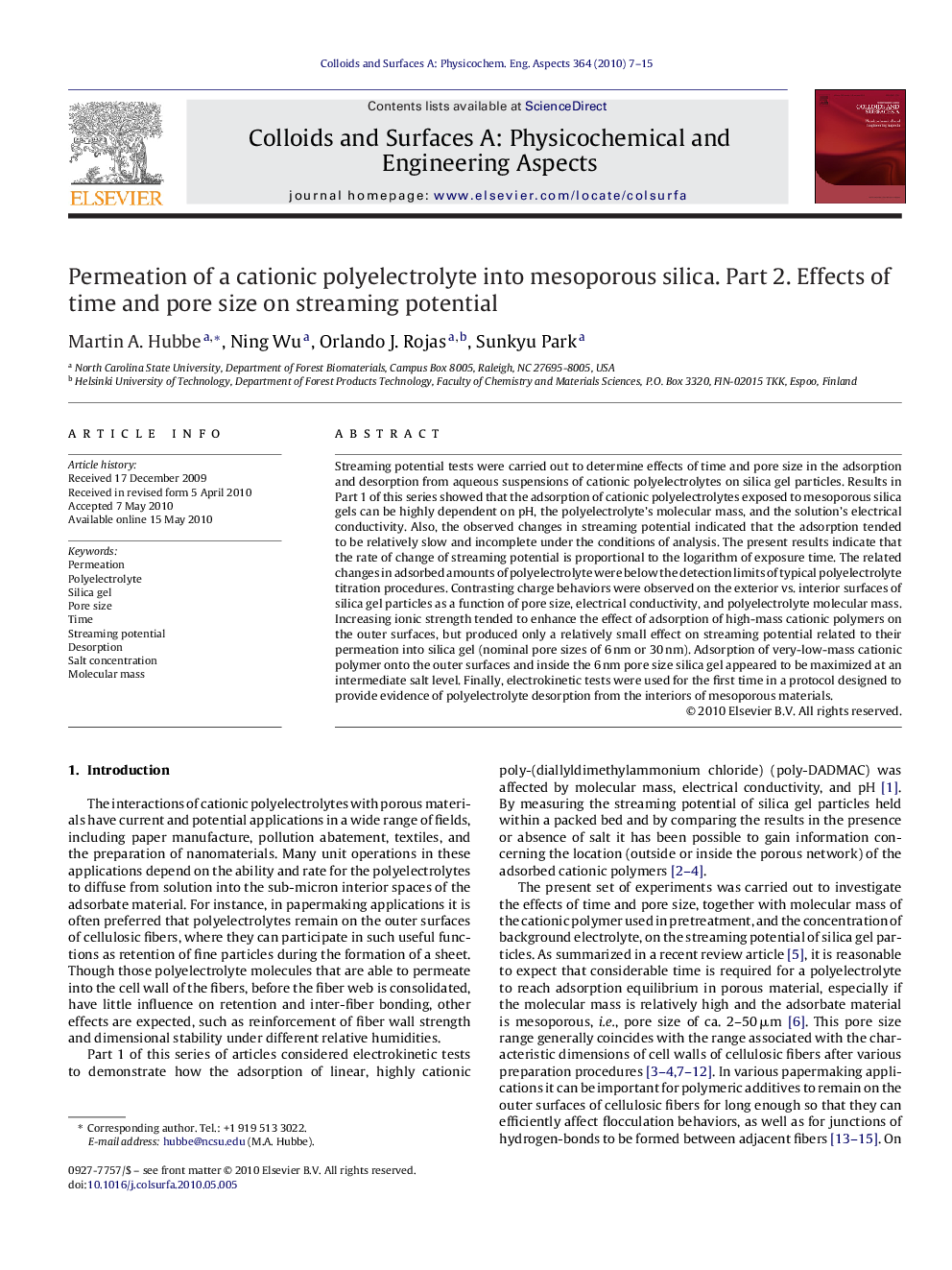| Article ID | Journal | Published Year | Pages | File Type |
|---|---|---|---|---|
| 595336 | Colloids and Surfaces A: Physicochemical and Engineering Aspects | 2010 | 9 Pages |
Streaming potential tests were carried out to determine effects of time and pore size in the adsorption and desorption from aqueous suspensions of cationic polyelectrolytes on silica gel particles. Results in Part 1 of this series showed that the adsorption of cationic polyelectrolytes exposed to mesoporous silica gels can be highly dependent on pH, the polyelectrolyte's molecular mass, and the solution's electrical conductivity. Also, the observed changes in streaming potential indicated that the adsorption tended to be relatively slow and incomplete under the conditions of analysis. The present results indicate that the rate of change of streaming potential is proportional to the logarithm of exposure time. The related changes in adsorbed amounts of polyelectrolyte were below the detection limits of typical polyelectrolyte titration procedures. Contrasting charge behaviors were observed on the exterior vs. interior surfaces of silica gel particles as a function of pore size, electrical conductivity, and polyelectrolyte molecular mass. Increasing ionic strength tended to enhance the effect of adsorption of high-mass cationic polymers on the outer surfaces, but produced only a relatively small effect on streaming potential related to their permeation into silica gel (nominal pore sizes of 6 nm or 30 nm). Adsorption of very-low-mass cationic polymer onto the outer surfaces and inside the 6 nm pore size silica gel appeared to be maximized at an intermediate salt level. Finally, electrokinetic tests were used for the first time in a protocol designed to provide evidence of polyelectrolyte desorption from the interiors of mesoporous materials.
